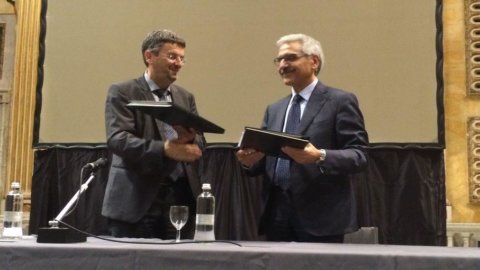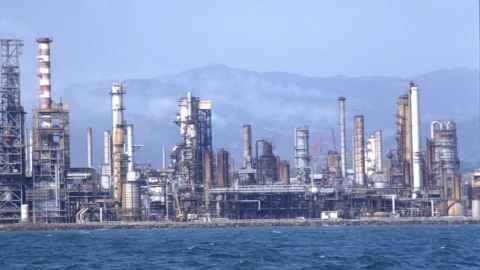If the Gotthard base tunnel enters service on 11 December 2016, which with its 57 kilometers will be the longest railway tunnel in the world, much of the credit will go to Italy, which is freeing up resources, but above all of Switzerland, which will finance the implementation of expansion measures in Italy to enable semi-trailers with corner heights of four meters to be transported by rail on the Gotthard axis as far north as Italy.
The Swiss Federal Office of Transport (UFT) and Rete Ferroviaria Italiana (FS Group), the railway infrastructure manager in Italy, have in fact concluded the agreement for the financing, planning and implementation of the necessary adjustments on the Luino line. The Agreement guarantees the financing of the measures envisaged on the Luino line for 120 million euros, as part of the Rhine-Alps Corridor project, which connects Genoa to Rotterdam and Antwerp and is part of the European plan aimed at encouraging the use of traffic rail freight and sustainable mobility by moving from road to rail. The corridor will connect the economic area of Northern Italy directly with Germany and the BeNeLux countries and will be ready in 2020, when the Monteceneri tunnel will also be completed.
“Switzerland – declares Peter Füglistaler, Director of the UFT – is located in the center of Europe. It is located in the center of Europe. It is therefore particularly affected by traffic passing through the Alps between Northern Europe and Italy. This applies to both rail and road, where heavy traffic has a major impact on the Alpine region. The goal of the federal transport policy is to shift freight traffic from road to rail: for this reason we are building Alptransit, a unique flat railway through the Alps, which requires investments of around 18 billion euros”.
The expansion of the free space profile of the Gotthard railway axis is an important element of the Swiss t policytraffic transfer, in light of the growing use of semi-trailers with corner heights of four meters by the transport and logistics sector. In this regard, Parliament has approved a total credit of 990 million francs, including funds for interventions in Italy. In Switzerland, between Basel and the southern flank of the Alps, a total of 170 expansion measures are required (modifications of tunnels, canopies, contact lines, signs and overpasses). The major intervention consists of the construction of the new Bözberg tunnel, two kilometers long.
But the work is beneficial for the entire continent, as also underlined by the CEO of Rfi, Maurizio Gentile: "Thanks to the base tunnels, along the Rhine-Alps corridor - the most important north-south corridor for rail freight traffic - it will be possible to cross the Alps on a flat route; in other words, there will no longer be major slopes to overcome”.





